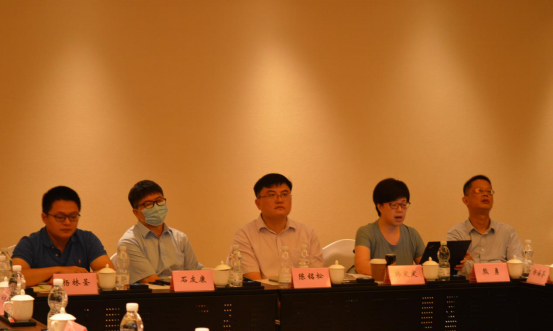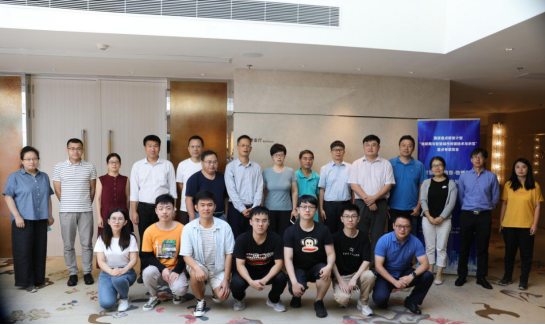On the morning of August 19, 2020, the annual report meeting for the National Key R&D Program project "Key Technologies and Applications of Information-Physical Fusion for Smart Cities" was held at the Suning Universal Courtyard Hotel in Shanghai. The meeting was hosted by East China Normal University, the leading institution of the project, with participation from the Ministry of Industry and Information Technology, project review experts, and leaders and technical staff from various participating organizations. Professor Dingding Han from the laboratory, as the project leader of a specific task, delivered a special report. Due to pandemic prevention and control measures, the meeting was conducted in a hybrid format, both online and offline.

Professor Dingding Han's research topic, "Smart City Visualization Information-Analysis System Based on the Physical and Logical Framework of Ultra-Complex Network Systems," is an important sub-project under the "Key Technologies and Demonstrations for the Internet of Things and Smart Cities" in the national key R&D program. Her report covered the overall situation of the topic, research objectives, technical approach, completed indicators, major progress, and management methods, providing a brief overview of the project's progress.
Additionally, through a video demonstration, the advantages of the platform developed in this project were highlighted, especially in comparison to previous visualized research results on smart city traffic issues. The platform's advantages are primarily as follows:
1. It can predict traffic flow more accurately by integrating road network characteristic information and visually present it to users. It compares predicted traffic congestion with the current situation, providing decision-making support for users' travel.
2. It can quickly obtain GIS data on the real state of the road network and construct a multi-layer road network structure. The system can rapidly calculate network parameters such as node centrality, betweenness centrality, eigenvector centrality, and closeness centrality of the real road network, and visualize the network structure.
3. Despite offering various visualization features and interfaces, the system developed by the project provides a complete framework for solving traffic-related issues. The modules are tightly connected, allowing data transfer and interactive analysis without requiring excessive manual intervention. All algorithms are embedded in the platform, operating through a machine learning model. By using data-driven models, problems are solved and visual results are generated simply by loading the data.

During the evaluation session, experts and leaders, including Shiyou Kang, Deputy Director of the Communication Standards Research Institute at the China Academy of Information and Communications Technology, and Liu Chunyan, Project Supervisor at the Industrial Development Research Center, expressed full recognition of the project's progress and achievements. They also provided constructive suggestions for further improvements and advancements.

